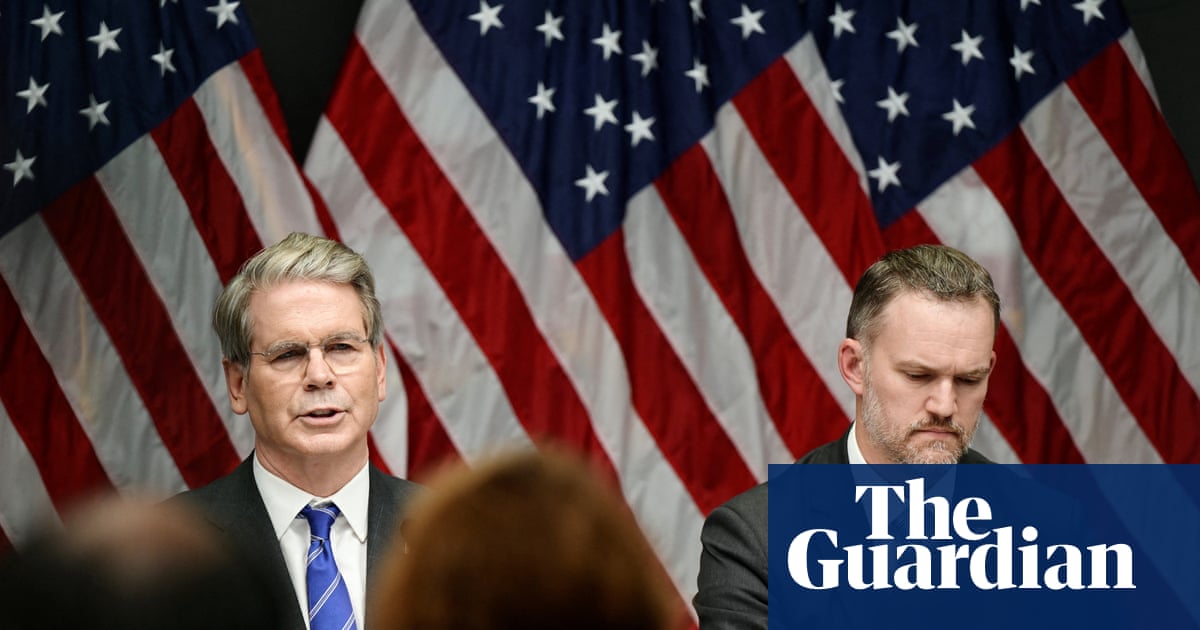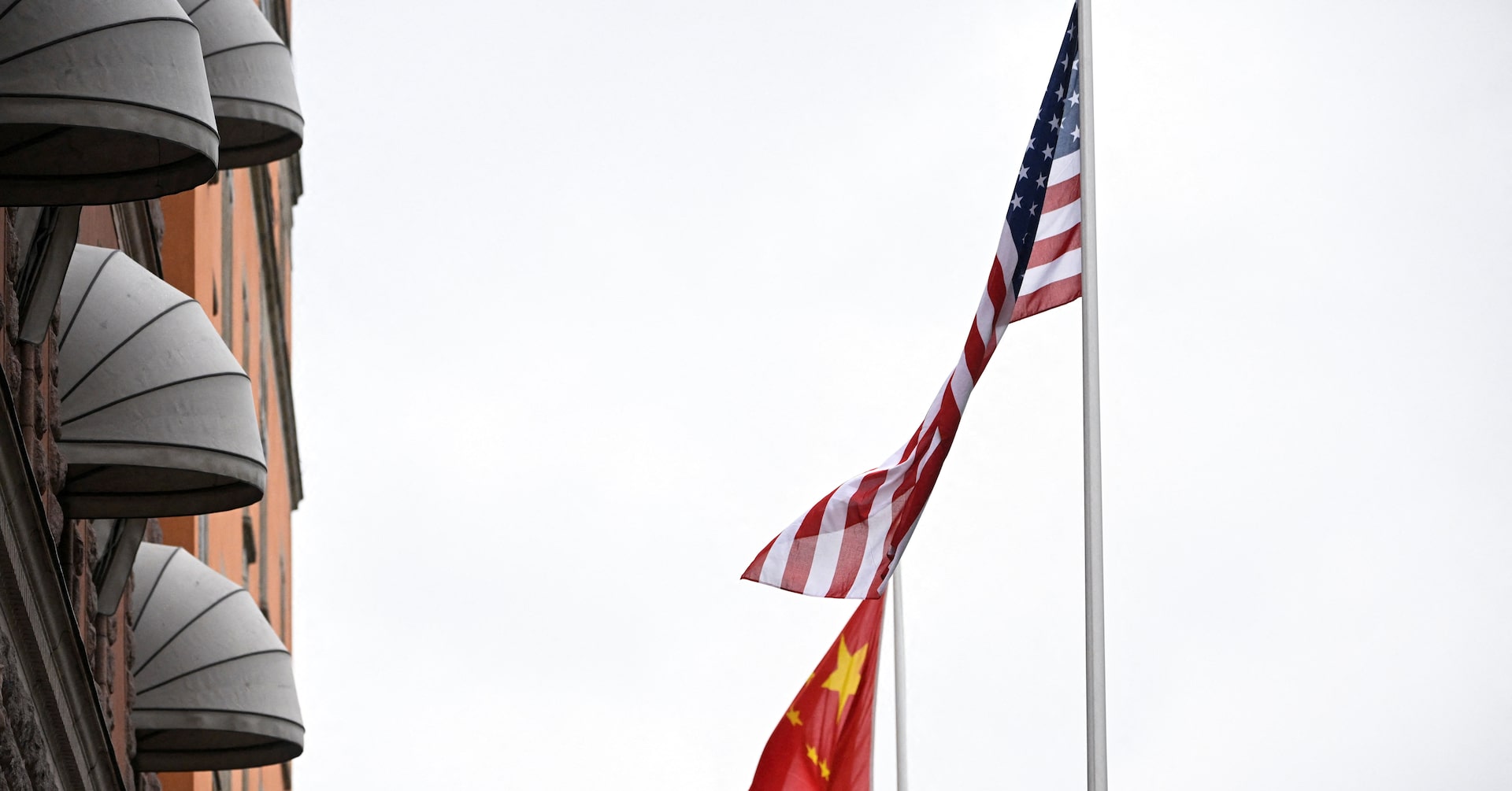In an era of intensifying global technological competition, revitalizing and strengthening U.S. relations with Africa, particularly in critical technology sectors, has become a strategic imperative. A collaboration announced March 24 between pan-African technology firm Cassava Technologies and U.S. artificial intelligence leader Nvidia exemplifies a compelling model for future U.S.-Africa technological engagement. This groundbreaking initiative, backed by a $700 million commitment from Cassava to establish Africa’s first AI data center powered by Nvidia’s advanced chips and supercomputers, marks a significant leap for the continent’s digital and AI capabilities. It directly addresses Africa’s challenges regarding access to high-end computing infrastructure and highlights a viable pathway for fostering digital transformation in regions critical to global technological diffusion and U.S. strategic interests.
This development comes at a time when the United States and China are competing not only to develop the most advanced artificial intelligence systems but also to export digital infrastructure and shape global AI governance. Although the U.S. retains an edge in large language models (LLMs) with platforms like OpenAI’s ChatGPT and Google Gemini, Chinese companies have made rapid progress. Models like DeepSeek R1 and Alibaba’s Qwen are increasingly competitive in speed and reasoning. Additionally, Chinese firms offer their models at a fraction of the cost of U.S. systems and often embrace an open-source approach, publishing core components for global use and customization. This is advantageous for developing regions like Africa, which are in an early phase of AI adoption and could benefit from diffusion that is low-cost and easy to access.
To combat this challenge, the United States should leverage its advantages in AI chips, graphics processing units (GPUs), and supercomputers to unlock the potential for indigenous African AI systems. U.S. companies have enormous capabilities to deploy their most advanced technologies to developing regions and participate in their AI development. Strategic public-private partnerships (PPPs) help ensure that American technology remains central to the future of global AI development, AI diffusion and other emerging technology sectors.
The Computing Deficit in Africa
African governments and startups harbor significant ambitions for AI development, but their progress is consistently impeded by the persistent digital gap. A U.N. Development Program study starkly illustrates this challenge, finding that only 5% of Africa’s AI developmental talent possesses the necessary computational power for research, innovation, and complex tasks. Within this group, only one-fifth benefit from “on-premise” access to GPUs, which allows them to train AI if they can cover hourly electricity costs. The rest can access cloud GPUs via credits or venture capital, but their limited budget of around $1,000 per month leaves roughly two hours of daily usage on an older Nvidia A100 GPU, effectively capping their computational reach.
Addressing this computational gap necessitates specialized infrastructure for AI development. There are three types of data centers: traditional data centers, cloud data centers, and AI data centers (or AI factories). Traditional data centers certainly contribute to building access to advanced computing on the African continent with central processing units (CPUs) that are useful for general-purpose computing like email, hosting web servers and databases. Cloud data centers use CPUs as well in combination with GPUs to deliver more advanced computing and resources. While both are necessary, they fall short of the robust power offered by an AI factory. Nvidia defines an AI factory as “a specialized computing infrastructure designed to create value from data by managing the entire AI life cycle, from data ingestion to training, fine-tuning, and high-volume inference.” AI factories are filled with large arrays of GPUs, which are densely clustered to provide the computational power necessary for AI training. These factories offer numerous advantages to businesses, including enhanced system performance, scalability for increasing workloads, and the crucial ability to transform raw data into actionable intelligence that can generate revenue.
Meeting the demands of building indigenous AI systems in African countries requires significant compute power. Traditional data centers do not provide the necessary level of computing capability for true innovation, leaving start-ups seeking more powerful options. Since the most advanced chips and GPUs are not readily available on the continent, companies’ ambitions are limited, creating the desire to explore strategic partnerships with technology leaders to secure access to cutting-edge hardware. Without dedicated, high-performance computing environments, Africa’s AI aspirations risk remaining largely unfulfilled, limiting its potential to drive economic growth and solve local challenges through advanced technologies.

Photo Credit: Nvidia
Strategic Technology Competition in Africa
China
China has committed to facilitating investment on the African continent through a state-led development model. Chinese state-owned banks like The Export–Import Bank of China and China Development Bank, as well as its signature Belt and Road Initiative (BRI), fund telecommunications and data projects largely under Chinese government leadership. The BRI is complemented by China’s Digital Silk Road, which aims to position China as a global tech leader through expanding digital infrastructure projects on the continent. The Chinese private sector plays a role in this process through companies like Huawei, ZTE, China Telecom, and Alibaba, which have poured billions of dollars into African telecommunications and cyber sectors, often with subsidized financing and bundled contracts.
China’s state-led approach has rapidly delivered scale globally through investments in cable landings, 5G networks, undersea cables, and satellite links. However, this model carries inherent risks, including unsustainable government debt, the development of technological dependency on Chinese platforms, and significant concerns regarding digital sovereignty. Increased reliance on Chinese technology providers grants Beijing greater control over data, consequently posing security risks to adopting nations.
In 2023, China released the Action Plan for the High-Quality Development of Computing Power Infrastructure. While the document emphasizes the need to expand data centers domestically, it also places focus on eventually supporting Chinese enterprises in “going global” (zou chu qu走出去) to deploy computing facilities across BRI countries and strengthening cooperation around compute technology. In Africa, this has been seen most prominently through Huawei’s expansion of cloud data centers in Egypt and Nigeria, as well as a joint collaboration between Alibaba Cloud and South African company BCX to bring cloud data centers to South Africa and Mozambique.
The 2024 Forum on China Africa Cooperation (FOCAC) brought a renewed interest in investment and diplomatic ties through the new banner of “small and beautiful” (xiao er mei小而美), which aims for smaller, greener, more reliable investment over risky, large-scale infrastructure projects. This includes a focus on private funding and PPPs over massive government spending as a mechanism to reduce the debt burden on investment in the continent. The FOCAC Action Plan (2025-2027) also noted a joint emphasis on bridging AI and digital divide as well as supporting the development of a China-Africa digital cooperation center, which will facilitate Chinese businesses in undertaking 20 digital infrastructure and digital transformation projects in Africa.
United States
The United States has implemented legislation to counter Chinese investment , starting with the 2018 Better Utilization of Investments Leading to Development (BUILD) Act. The BUILD Act, signed into law during the President Donald Trump’s first term, the law established the U.S. International Development Finance Corporation (DFC), consolidating and expanding upon the functions of the Overseas Private Investment Corporation and certain elements of the U.S. Agency for International Development (USAID). Additionally, it leverages $60 billion in funding for the DFC to enable global investments in critical sectors like infrastructure, energy, and technology.
President Joe Biden’s administration sought to energize U.S.-Africa cooperation, most prominently through the 2022 U.S.-Africa Leaders’ Summit, which resulted in the Digital Transformation with Africa (DTA) initiative. The DTA aims to expand digital access on the continent, increase commercial engagement between U.S. and African companies, support increased digital literacy, and strengthen digital enabling environments across Africa. It has committed over $350 million in investment and aims to mobilize over $450 million in financing for Africa’s digital transformation.
Many commercial players are actively expanding their reach in Africa, such as Google and Microsoft. In 2021, Google committed to invest $1 billion in Africa’s digital transformation through investment in entrepreneurs, technology training and building digital infrastructure. It also includes the launch of a “cloud region” in Johannesburg, South Africa, which incorporates cloud data centers and integration of African networks to its overall cloud services base. Google is on track to meet its commitments and has invested into numerous startups shaping technology in Africa.
The second Trump administration, through Acting Assistant Secretary of State for African Affairs Troy Fitrell, unveiled a new “commercial diplomacy” strategy for Africa, shifting focus from traditional development aid to expanded trade and private investment. Under this approach, U.S. ambassadors will be assessed by the number of deals they facilitate for American businesses.
Closing the Computing Gap
The partnership between Cassava Technologies and Nvidia focuses on a layer overlooked by prior engagements in Africa: directly addressing limited high-performance compute capacity on the continent. The initiative has three core components: investment, infrastructure, and scale. First, Cassava Technologies plans to invest up to $720 million in the AI data center plan, one of the largest private tech infrastructure commitments in Africa to date. Next, both parties are set to play a role in providing the infrastructure for the AI data centers. Cassava will leverage its existing data centers across the continent and experience in data connectivity to power the centers, while Nvidia supplies them with supercomputers.
Few companies come close to the dominance of Nvidia in the AI sector due to its advances in GPUs. Nvidia holds a 93% share in the global GPU market and is the innovator behind most of the advanced chips required to power top systems around the world. For African startups, access to these chips has been limited due to high costs and lack of availability. By bringing them to the continent, Nvidia will assist in closing the computing gap by facilitating access to hardware throughout key sectors.

The initial phase was sent to launch in June in South Africa, where Nvidia will deploy 3,000 GPUs to a Cassava-built data center. Over the next three to four years, the project is set to expand to an additional 12,000 GPUs across data centers in Egypt, Nigeria, Kenya, and Morocco. Following the first data center, Cassava signed a memorandum of understanding with the South African AI Association to provide GPU access to over 3000 AI practitioners.
Cassava’s new AI data center will enable local startups, enterprises, and governments to accelerate digital innovation by providing AI as a service across sectors such as health care, agriculture, and fintech. This venture marks a significant advancement in Cassava’s extensive digital infrastructure portfolio. Building on over a decade of experience in developing data centers and fiber optic networks, the company is now directly addressing the crucial demand for compute capacity essential for powering homegrown AI solutions throughout Africa. Importantly, it also ensures data will remain within the continent’s borders and promote Africa’s digital sovereignty. This offering will be financed entirely by Cassava’s own resources.
Divergence from Prior Engagements in Africa
The Cassava-Nvidia partnership differs from China’s state-led digital development model, which it has largely facilitated through the BRI and Digital Silk Road. First, it is a private sector-led initiative between a pan-African company and a U.S. tech giant where implementation comes from the African side. Cassava is financing the project and is set to build the data centers that back the AI factory. The two sides have aligned incentives to grow the African digital economy, creating customers for U.S. tech companies.
The partnership also differs from prior U.S. engagement on the continent, which has focused on loans and aid funding for digital infrastructure and education objectives. The results of these efforts are often unclear and are hard to project as successes. Cassava and Nvidia diverge from this by targeting improving Africa’s compute capacity and forging a well-balanced relationship that limits potential power imbalances often seen in Western and Chinese collaborations on the continent. Geopolitically, the partnership also effectively serves to reduce reliance on adversarial suppliers by providing sought-after hardware and infrastructure to the continent.
Redefining U.S. Public-Private Partnerships in Digital Infrastructure
The Cassava-Nvidia partnership is a private-sector initiative but embodies strengths of strategic partnership dynamics and PPP in digital infrastructure. Cassava notes it was able to mobilize the large private investment necessary for the project in part due to strong backing from diverse shareholders, including the U.S. government and the private sector. In December 2024, the DFC, alongside Google and the Finnish Fund for Industrial Cooperation, led a $90 million equity investment round into Cassava. The DFC has identified Cassava as a U.S-backed success.
Enhancing the role of PPPs in digital infrastructure allows the United States to mobilize large private investment without requiring equivalent U.S. government spending. This helps to limit debt risk in African countries and gives companies on the continent a larger role in the development of their own infrastructure. Additionally, PPPs draw on market discipline and innovation from tech firms like Nvidia with expertise to increase prospects of success.
The initiative offers benefits for all sides. For African countries, this partnership ensures that data remains within its borders, aligning with the African Union’s Continental Artificial Intelligence Strategy. It is also an investment in AI to assist companies in solving agriculture, health care, and energy challenges. For the United States, the partnership secures markets for American innovation by leveraging an American tech leader in supplying cutting-edge hardware to African markets. Additionally, it limits Chinese technology from dominating global digital ecosystems and capitalizes on an advantage that the United States has over China in GPUs and chips.
Limitations
Scale
Ensuring partnerships like Cassava and Nvidia’s remain a facet of U.S. technology efforts in Africa will require consistent funding and agreements, which is likely to be a challenge. Cassava Technologies is an established technology company with decades of telecommunications and data center experience, facilitating partnerships through its expertise and reputation. It came into the Nvidia partnership with the backing of investors, including the DFC, which made the substantial contributions necessary to enable it to fund new AI factories on its own. Making similar pushes to other African technology companies may be riskier, especially to those without the same level of experience and recognition, requiring training and investments before a project can be initiated.
Infrastructure Gaps and Technical Capacity
AI factories and high-quality data centers require a significant amount of electricity and cooling infrastructure to function effectively for GPU storage and data transformation. Many African countries, including some of the listed locations for Cassava AI factories, face occasional blackouts, unreliable electricity streams, and water accessibility issues that can compromise the prospects for similar ventures. Before jumping to large-scale projects such as AI factories, the foundations of connectivity must be assured.
Market and Revenue Risk
The investments into Cassava and subsequent partnership with Nvidia were possible in large part due to the reputation of the company and its founder, Strive Masiyiwa. Cassava also had the capital necessary to fund the AI factories confidently. Other partnerships of this kind may require more risk from private companies, which may be hesitant to seek connections with companies that cannot predictably guarantee returns on investment.
Policy Recommendations
Reauthorize and Increase DFC Funding – To leverage the success of the Cassava-Nvidia partnership, the United States should strengthen development finance tools, particularly the DFC, by restructuring BUILD Act principles. With the act’s funding authorization expiring in November, congressional action is imperative. In an era of rapid technological advancements, diffusion, and cooperation, the DFC will require a far more substantial budget than $60 billion over several years. Diverting funds typically allocated for USAID toward an increased DFC budget could work to secure the United States’ role in global development while ensuring robust returns.
Codify Commercial Diplomacy Policy for Both Public and Private Sector – To fully realize Fitrell’s outlined shift toward commercial diplomacy in Africa, where U.S. ambassadors champion American businesses, a comprehensive policy document is essential. This document should clearly delineate the roles of the U.S. government and private sector. Furthermore, enhanced communication regarding the implementation strategies of entities such as the Commerce Department and the DFC would significantly contribute to a robust engagement model for the African continent.
Open Doors to U.S. Technology Access – In April, the Trump administration reversed the Biden administration’s AI Diffusion Rule, which had placed limits on exports of advanced AI chips depending on the destination nation’s friendliness and risk level toward the United States. While it plans to replace the policy with a new diffusion guideline, it’s important that the United States not close its doors for African states and companies to access key technologies necessary for AI development.
Mobilize Private Capital Through Alliance Networks – U.S. investment in Cassava was significantly bolstered by joint efforts with Google and Finnfund, a Finnish development financier with business experience in Africa. Such strategic partnerships with companies in friendly countries, fostering development and technology diffusion, will enable the United States to enhance its investment impact across the continent. These collaborative efforts are most effectively scaled when investments remain commercially driven and focused on generating successful returns for financial backers.
The views expressed in this article are those of the author and not an official policy or position of New Lines Institute.


